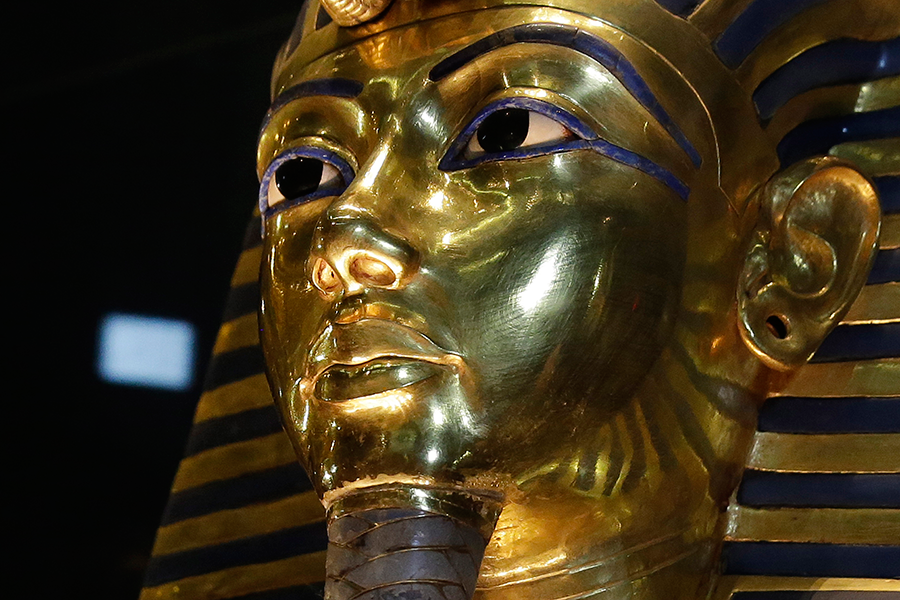Does King Tut's tomb have hidden chambers?
Loading...
Since his intact tomb was discovered in Egypt in 1922, the mysterious, young Tutankhamun, better known today as King Tut, has never ceased to capture the world’s imagination.
Now, the 3,000-year-old pharaoh delivers more intrigue, after Egypt’s antiquities minister Mamdouh Eldamaty on Monday confirmed that archeologists have found evidence of two hidden doorways, one of which might lead to the burial chambers of Queen Nefertiti, principal wife of Tut's father Akhenaten, according to National Geographic.
“To be honest, I feel numb,” Nicholas Reeves, an archaeologist from the University of Arizona who first proposed the existence of the hidden rooms earlier this year, told National Geographic. “This has been part of my life now on a daily basis for more than a year.”
Recent, high-resolution scans of King Tut’s burial chamber in Egypt’s Valley of the Kings, a popular burial destination for pharaohs and other powerful Egyptians of the 16th to 11th centuries B.C., showed traces of the doorways for the first time.
In a paper published this year, Dr. Reeves put forward a theory that behind one of the newly discovered doorways lies a storage room, and behind the other, “undisturbed burial of the tomb’s original owner – Nefertiti,” who may have been Tut’s mom.
This is a controversial assertion among Egyptologists, as Queen Nefertiti, who died in 1331 B.C., has been claimed to have been found three times in the last 12 years, reports National Geographic. There’s even DNA evidence that suggests she might have been among a group of mummies discovered in 1898 who now lie peacefully at the Egyptian Museum in Cairo.
"If I'm wrong, I'm wrong," Dr. Reeves told the BBC. "But if I'm right, the prospects are frankly staggering.”
English archaeologist Howard Carter discovered King Tut’s tomb in 1922, becoming famous for bringing light to Egypt’s 18th Dynasty, of which little had been previously known. Tut also became famous, his 19 years of life and mysterious death a decade into his reign confounding historians to this day.
The small size and layout of King Tut’s tomb to Dr. Reeves are clues that it was designed to store the remains of a queen, not a king. The idea is that because of the boy pharaoh's unexpected death at a young age, there was no tomb ready, so Tut was squeezed into a new chamber near Nefertiti, with her chamber door covered by plaster.
Dr. Reeves believes that even the wall murals depicting Tut in various scenes originally featured Nefertiti and were later altered to look like the young pharaoh.
Before the end of the year, archeologists will investigate the potential doors with radar equipment and thermal imaging which will provide more clues to the treasures that lie behind the hidden doors.
"I think there are certainly some signs that there might have been some activity around those doorways," Joyce Tyldesley, an Egyptologist with the University of Manchester told the BBC.
Whether that points to the tomb of Queen Nefertiti is questionable, she said, "But if it was true, it would be absolutely brilliant."







